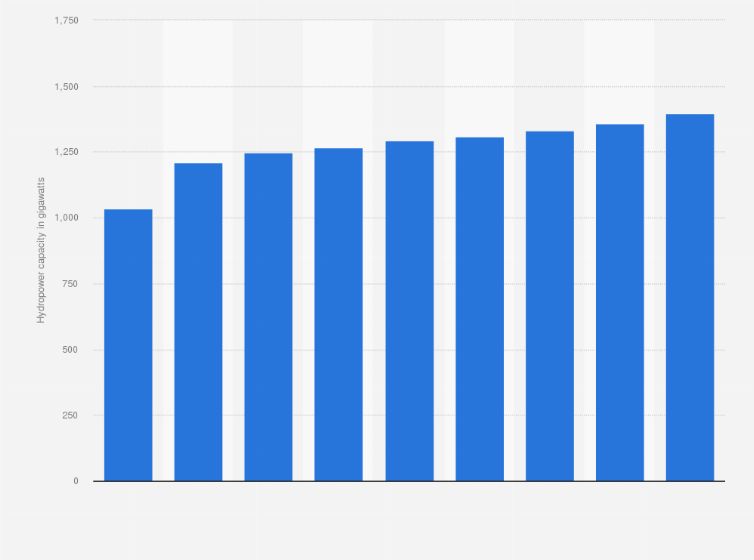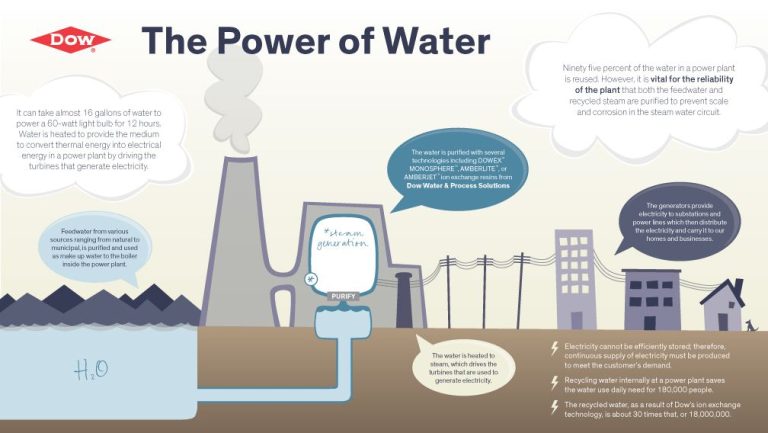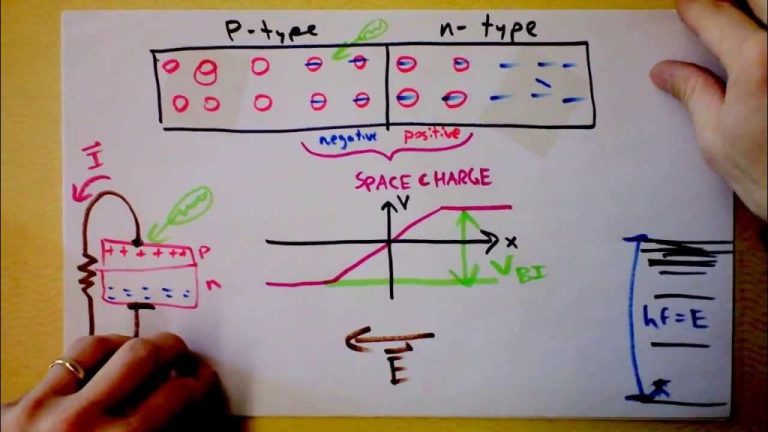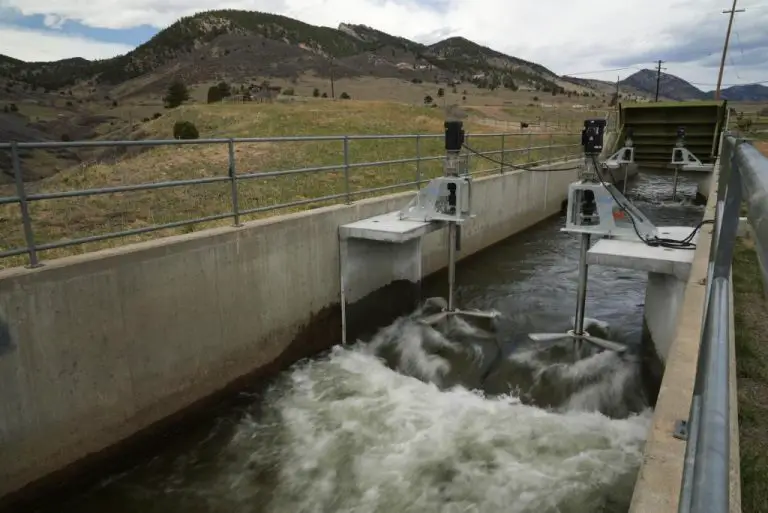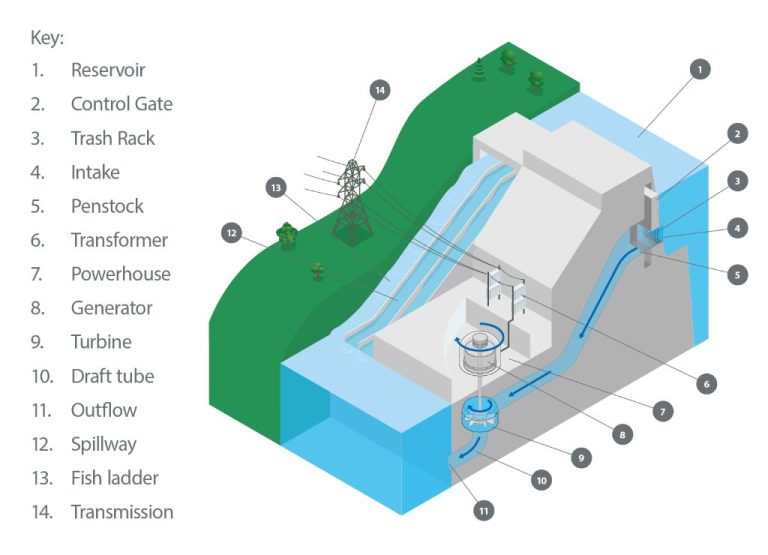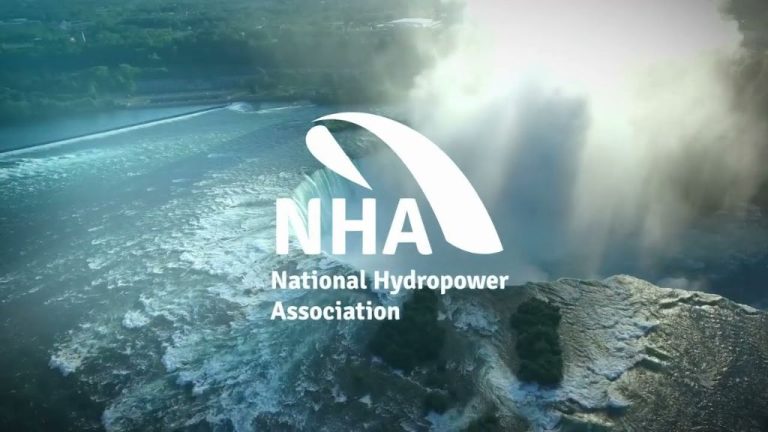Can Hydropower Purify Water?
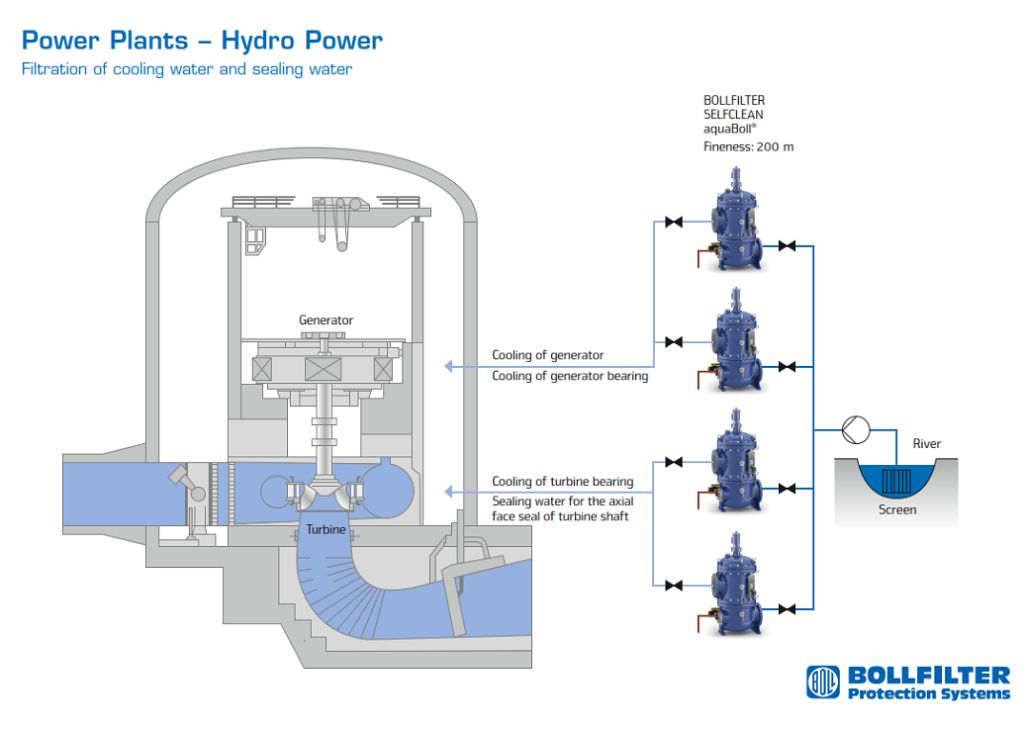
Hydropower is a form of renewable energy that utilizes the natural water cycle to generate electricity. It is considered a clean and sustainable energy source. Hydropower works by using the force of moving water to spin large turbines connected to generators, which convert the mechanical energy into electrical energy. The moving water that drives the turbines typically comes from rivers or water that has been dammed and stored in reservoirs. The height and flow of the water determines the amount of electricity that can be generated.
Overall, hydropower provides a reliable way to generate electricity through a renewable resource. It accounts for over 16% of the world’s electricity production and is the most widely used form of renewable energy. Hydropower plays an important role in the global renewable energy landscape and will continue to be a key source of clean electricity in the future.
Hydropower and Water Purification
Hydropower systems can aid in water purification in several ways. The reservoirs created by hydropower dams provide storage for large volumes of water. This allows suspended sediment to settle out through natural processes, removing turbidity and purifying the water to some degree (Source). Water flowing through hydropower turbines and penstocks is also subject to physical purification as sediment and particles are filtered out. Additionally, some hydropower facilities directly integrate water purification systems like sedimentation tanks or filtration units to further treat water as part of their operations (Source).
However, hydropower systems alone cannot fully purify water to drinking water standards. They remove some contaminants but additional steps like disinfection, microfiltration, and reverse osmosis are needed to make water safe for human consumption and other uses. So while hydropower provides a degree of physical purification through settling and filtration, integration with other water treatment processes is required for complete purification (Source).
Hydropower Dams and Reservoirs
Hydropower dams are built to block rivers and create large reservoirs for storing water. The reservoirs formed behind hydropower dams serve as a source of potential energy for generating electricity as the water is released through turbines [1]. However, these reservoirs also allow contaminants in the river water to settle out over time.
Suspended particles like silt, sediment, and clay can settle on the bottom of the reservoir due to the decreased water flow. This allows clearer water to remain at the top of the reservoir. Algae, bacteria, and other microorganisms in the reservoir also work to break down organic contaminants and pollutants naturally over time [2]. The longer the water is retained in the reservoir, the more potential purification can occur.
Additionally, stratification often occurs in the deeper parts of reservoirs, with colder denser water sinking to the bottom. This keeps poor quality water with contaminants separated from the clearer water at the surface which gets released downstream [3]. Overall, hydropower reservoirs allow time for natural purification processes to occur before water gets discharged downstream.
Water Flow in Hydropower Systems
The flow of water is central to how hydropower systems generate electricity. As water flows from the reservoir through the turbines, the motion spins rotors that convert the kinetic energy into electrical energy. This water flow also creates an opportunity for filtration and purification.
As water passes through the hydropower system, it encounters physical barriers and filtration devices that can remove contaminants. Sedimentation occurs in the reservoir, allowing suspended particles to settle on the reservoir bed over time. The water intake screens and trash racks also filter out debris, plants, and animals before the water reaches the turbines [1].
Sand filters are often installed to further remove sediment from the water flow downstream of the trash racks. The turbulence and agitation of the water as it flows through the turbines and penstocks can also help precipitate dissolved minerals and organics. Overall, the multiple stages of filtration during the journey of water through a hydropower facility significantly improve water quality.
However, the purification capabilities of hydropower systems alone are limited. Smaller contaminants like viruses, heavy metals, and dissolved salts are not removed effectively without additional treatment. The priority of hydropower dams is also energy generation rather than water treatment. As such, the purification benefits are a secondary function that depends on the system configuration rather than the main goal.
Limitations of Hydropower Purification
While hydropower dams and reservoirs can provide some incidental water purification, hydropower alone has significant limitations for comprehensive water purification (Source 1). The primary purpose of hydropower systems is to generate electricity, not to purify water.
Hydropower reservoirs allow some natural purification as water flows through them. Suspended sediment and particulate matter can settle to the bottom of the reservoir over time. However, reservoirs are not designed for optimal purification and often suffer from algae blooms, thermal stratification, and accumulation of pollutants. Water also flows through the reservoir relatively quickly, limiting purification treatment time (Source 2).
Additionally, hydropower systems themselves can negatively impact water quality through disrupted water flow, flooded vegetation, and submerged sediment. Dam construction often releases nutrients and contaminants downstream initially. Ongoing water fluctuations and releases from dams also degrade water quality (Source 2).
While hydropower provides renewable electricity generation, dedicated water purification methods are needed for drinking water, wastewater treatment, and meeting water quality standards. This may require combining hydropower with other purification techniques such as filtration, disinfection, and advanced oxidation processes (Source 3).
Additional Water Purification Methods
Water purification techniques are vital for providing clean, safe drinking water around the world. While hydropower systems may contribute to purification, there are other methods that are commonly used as well.
Some of the most popular water purification techniques include:
- Filtration – Filtering water through different materials like sand, activated carbon, and cloth removes contaminants. Filtration systems range from basic cloth filters to advanced multi-stage systems.
- Distillation – This involves boiling water and condensing the steam to separate pure water from contaminants. Distillation is very effective at removing minerals, salts, and heavy metals.
- Reverse Osmosis – Using high pressure, water is forced through a semipermeable membrane that filters out contaminants. Reverse osmosis removes particulates, bacteria, minerals, and more.
- Chlorination – Adding chlorine chemicals like calcium hypochlorite to water kills bacteria and microorganisms. Chlorination is commonly used to disinfect municipal water supplies.
Many modern water treatment facilities use a combination of techniques such as coagulation and flocculation followed by filtration and chlorination. There are also portable purification methods like ultraviolet disinfection, solar disinfection, and the use of water purification tablets.
While hydropower systems provide some incidental purification, dedicated water treatment via methods like filtration and disinfection are usually still required to meet drinking water standards. However, hydropower and water purification techniques can complement each other when properly integrated.
Integrating Hydropower and Purification
While hydropower dams and reservoirs provide some natural water purification through sedimentation and exposure to air, additional water treatment methods are often needed to fully purify water for drinking and other uses. Hydropower systems can be integrated with other purification techniques as part of a comprehensive water treatment process.
One approach is to use the filtered water from a hydropower reservoir as the source for subsequent treatment steps like ultrafiltration, reverse osmosis, ozonation, and disinfection. For example, the Unger HydroPower® RO Multi-stage Pure Water System combines reverse osmosis and deionization to produce high purity water by using the reservoir water as its feed water.
Hydropower electricity generation can also help power the energy demands of water purification infrastructure. According to the National Renewable Energy Laboratory, integrating hydropower with desalination, water reuse, and pumping systems can improve efficiency and lower costs by taking advantage of on-site renewable electricity.
Overall, strategically integrating hydropower into the larger water system enables tapping the strengths of multiple technologies to achieve reliable and affordable water purification.
Case Studies
There are a few examples where hydropower facilities have been used to help purify water:
Hydropower Case Study Collection: Innovative Low Head Technologies for Sustainable Energy Supply, Food Security, and Purification in Remote Areas discusses a project in Peru where a small hydropower plant was integrated with a water treatment system to provide electricity and clean water to remote communities. The turbine generator powered an ultrafiltration unit that purified river water for drinking.
At the John Hollway drinking water plant in Pennsylvania, hydropower turbines were installed to recover energy from the 36 million gallons of water treated per day. The turbine generates electricity to offset the plant’s energy costs.
The Cleveland Water System installed a micro-hydropower system at one of its water treatment plants. The turbine generates electricity from the flow and pressure of 16 million gallons of water per day.
The Future of Hydropower Purification
New research is exploring ways to optimize and expand the use of hydropower systems for water purification. Scientists are developing new technologies to integrate filtration and disinfection processes directly into hydropower infrastructure.
For example, researchers at Oak Ridge National Laboratory are designing filter materials that can remove contaminants while allowing water to pass through turbines. This could enable purification during normal hydropower operations.
There are also efforts to implement ultraviolet disinfection at hydropower facilities. UV systems could inactivate pathogens in the water as it flows through the dam infrastructure. This approach has been tested at several pilot sites with promising results.
In the future, advanced oxidation processes using hydropower to generate hydroxyl radicals may offer another purification method. This emerging technology could break down chemical pollutants without the need for added chemicals.
Hydropower’s inherent advantages for large-scale water storage and transport create opportunities to integrate many developing water treatment solutions. With further research and innovation, hydropower systems could become an even more vital source of renewable energy and clean water worldwide.
Conclusion
In summary, hydropower systems alone have limited water purification capabilities. While the reservoirs associated with dams can allow some natural sedimentation and biological purification through exposure to air and sunlight, this process is slow and incomplete compared to other dedicated water treatment methods.
Dams and reservoirs may remove some pollutants and pathogens through settling and natural die-off, but they cannot fully purify water or remove chemical contaminants. Relying solely on hydropower would result in water that still requires additional filtration and disinfection before human use.
That said, hydropower systems can potentially serve as a useful pretreatment step when combined with other purification techniques. Sedimentation in reservoirs decreases turbidity, and some biological purification may occur. This can reduce the burden on downstream treatment processes like filtration and chlorination.
Overall, hydropower alone has limitations as a water purification strategy. While it may provide some initial improvements, the most effective approach involves integrating dams and reservoirs with subsequent water treatment to optimize the removal of particulates, microbes, and harmful chemicals from our water supply.

